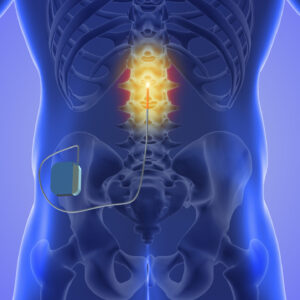Understanding Spinal Cord Stimulators: An Introductory Guide
Chronic pain can be a debilitating problem that interferes with your everyday activities. More than 20% of Americans live with chronic pain that reduces their quality of life. In the long run, persistent pain can lead to depression, weight gain, and even abuse of pain medication.
One of the most effective treatment options for chronic pain is spinal cord stimulation (also called neuromodulation). Your doctor may recommend implanting a spinal cord stimulator when other non-surgical treatments fail.
The spinal cord stimulator sends a mild electrical current to stimulate specific nerve fibers in the spinal cord. This interferes with the pain signal that goes to your brain. Let’s take a closer look at the way spinal cord stimulators work.
What is a Spinal Cord Stimulator?
Spinal cord stimulators are surgically implanted medical devices that deliver electrical impulses to the spinal cord, intending to reduce or eliminate chronic pain.
 These stimulators consist of three components:
These stimulators consist of three components:
- Pulse generator – a pacemaker-like device implanted under the skin (usually in the abdomen or buttocks area)
- Electrodes – wires that are surgically inserted in the epidural area near the spinal cord
- Remote control – a small remote that allows you to activate the stimulator when you feel pain
The three main types of spinal cord stimulators:
- Implantable pulse generator (IPG)– a battery-operated stimulator implanted in the spine (the battery has to be replaced surgically)
- Rechargeable IPG – an IPG with a battery that can be recharged without surgery
- Radiofrequency stimulator – a stimulator with a battery outside the body. This older version of IPG is rarely used because newer technology is available
Your doctor may recommend one of these three stimulators depending on the source of your chronic pain.
How Do Spinal Cord Stimulators Work?
While a comprehensive explanation of how these devices work may be outside the scope of this introductory article, their operation is generally based on the gate control theory of pain.
It suggests that the spinal cord acts as a gatekeeper for pain signals that travel to the brain. When a non-painful sensory input (e.g. an electrical pulse from a spinal cord stimulator) goes into the cord, it closes the “gate” and blocks or reduces the pain signal.
The implantation of the spinal cord stimulator is done in three steps:
- Administrating anesthesia (usually epidural)
- Inserting electrodes through a small incision and connecting them to the pulse generator
- Implanting the pulse generator
After the surgery, the doctor provides instructions on how to use the handheld remote control. You may need to adjust the settings for the first few weeks after the implantation.
Conditions Treated by Spinal Cord Stimulators
- Failed back surgery syndrome
- Complex regional pain syndrome (CRPS)
- Neuropathic pain
- Chronic pain (leg, pelvic, neck, back, etc.)
- Chronic pain due to spinal cord injury or nerve damage
- Chronic pain associated with degenerative disc disease
The Procedure of Getting a Spinal Cord Stimulator
Before you can be cleared for the procedure, you’ll need to undergo a pre-procedure assessment. It involves a careful review of your medical history and a psychological evaluation.
You will also have to go through a trial period. Your doctor will implant temporary electrodes attached to an external generator to check how well your body responds to the stimulation. If the trial is successful, they can install a permanent device.
The recovery period after installation is around two to four weeks. Patients usually return to normal activities two weeks after the surgery.
Benefits and Risks
The main benefits of installing a spinal cord stimulator are reduction of chronic pain levels and improved quality of life. However, since implanting this device involves a surgical procedure, it comes with the risk of infection and potential discomfort at the implantation site. For some patients, the device may also lose effectiveness over time. Patients are encouraged to discuss all of the benefits and risks directly with their doctor.
Spinal Cord Stimulator Implants in Middle Tennessee
A spinal cord stimulator can be an effective solution to the chronic pain problem. For people whose chronic pain doesn’t respond to common treatments, a stimulator may be an excellent way to improve their quality of life.
If you live with chronic pain, consider consulting your physician about the possibility of installing a spinal cord stimulator. For more information about the procedure and to discuss your case with a professional, please contact our medical team at the Pain Institute at any convenient time.